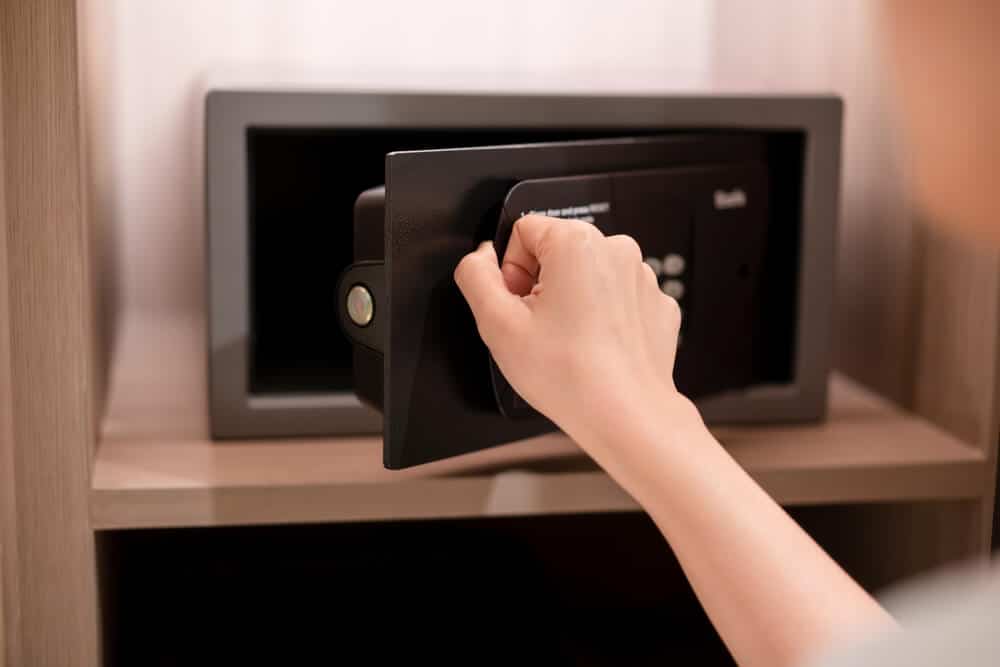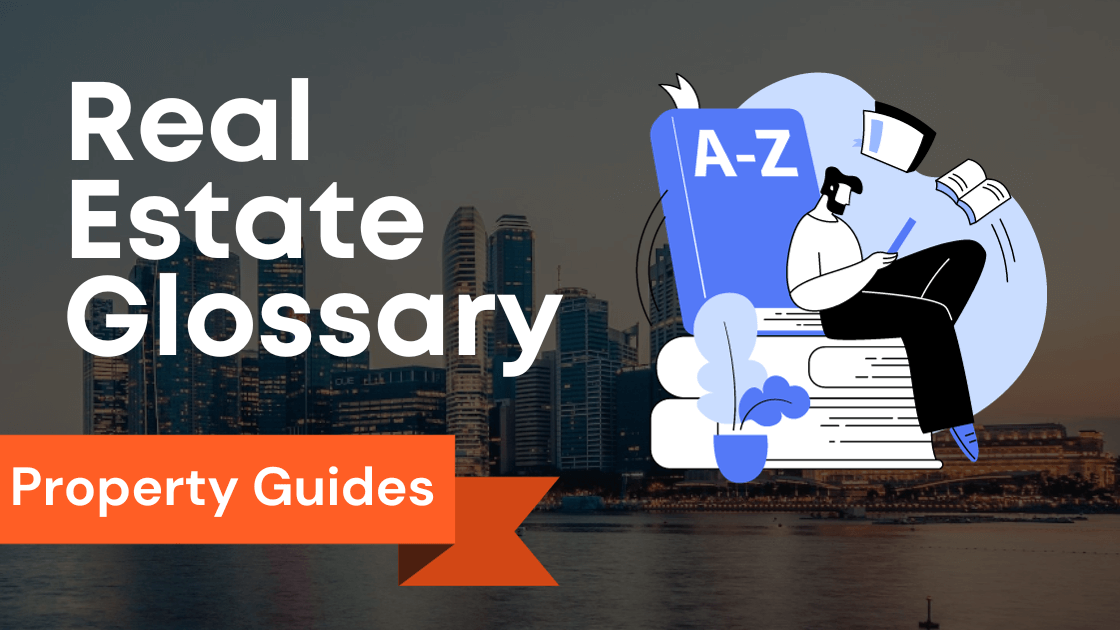
Are you curious about the CPF system and how it can help you build a secure future?
Whether you’re just starting your career or nearing retirement, understanding the ins and outs of CPF is essential.
In this article, we’ll break down the CPF system in simple terms, from the different CPF accounts to strategies for maximizing your savings and exploring investment options.
Get ready to take control of your financial journey and discover how CPF can pave the way to a comfortable retirement and financial security.
Key Takeaways
| Key Takeaways | Explanation |
|---|---|
| CPF System and Its Different Accounts | – CPF is a savings scheme managed by the CPF Board for retirement and healthcare needs. |
| – Three CPF accounts: Ordinary Account (OA), Special Account (SA), and Medisave Account (MA). | |
| Exploring the Special Account (SA) for Enhanced Retirement Savings | – SA offers higher interest rates, fewer withdrawal options, and a higher savings cap compared to OA and MA. |
| – Eligibility: Singaporeans and PRs below 55 years old with a monthly salary above $750. | |
| The Role of the Ordinary Account (OA) in CPF and Its Benefits | – OA is primarily used for housing, investments, and education. |
| – Benefits include using OA for housing expenses, education expenses, and repaying home loans. | |
| Transferring Funds Between CPF Accounts | – CPF transfers enhance retirement savings, including cash and non-cash transfers. |
| – Transfer funds through CPF website using various schemes such as Cash Top-Up Scheme and CPF Investment Scheme. | |
| Maximizing Earnings in Your CPF: How to Earn Extra Interest | – CPF offers different interest rates for OA, SA, and MA. |
| – Strategies to earn extra interest include committing funds to the Retirement Account and transferring balances between accounts. | |
| Investing Your CPF for Long-Term Growth and Retirement Planning | – CPFIS allows investing in stocks, bonds, and unit trusts. |
| – CPF system guarantees a minimum interest rate, providing long-term retirement planning options. | |
| Leveraging the Medisave Account for Healthcare Expenses | – Medisave Account is for healthcare expenses and paying health insurance premiums. |
| – Funds cannot be used for non-healthcare expenses, but there are approved withdrawal schemes for other purposes. | |
| Exploring the Benefits of CPF OA for Housing and Property Investments | – CPF OA is designed for housing and property investments. |
| – Various schemes and grants available to leverage CPF OA for housing-related expenditures. | |
| Topping Up Your CPF: How Additional Contributions Boost Retirement Savings | – Topping up CPF increases savings cap and provides tax relief benefits. |
| – Different top-up schemes available, including cash top-ups and Retirement Sum Topping-Up Scheme. | |
| CPF Retirement Account: Understanding the Requirements and Payouts | – CPF RA provides monthly payouts for retirement expenses. |
| – Eligibility criteria include age and minimum sum requirements. | |
| Using Your CPF for Education and Skill Development | – CPF Education Scheme and CPF SkillsFuture Scheme allow using CPF savings for education and skills upgrading. |
| – Eligibility criteria and limits for using CPF funds for education or skills upgrading. | |
| Managing Risk and Making Informed CPF Investment Decisions | – CPF offers investment options such as CPFIS and CPF RSS. |
| – Consider risk appetite, investment objectives, and market conditions before making investment decisions. | |
| Enhancing Retirement Income with CPF Life | – CPF Life is an annuity scheme providing monthly payouts for retirement. |
| – Different CPF Life plans available with varying payouts and bequest options. | |
| Exploring the Tax Relief Cap and Benefits of CPF Contributions | – CPF contributions offer tax relief and reduce taxable income. |
| – Tax relief cap for CPF contributions and optimizing contributions for tax savings. | |
| Planning for Retirement: Growing Your CPF Savings and Achieving Financial Security | – Start |
Understanding the CPF System and Its Different Accounts
What is CPF?
CPF is a savings scheme managed by the CPF Board, which enables Singaporeans to save for retirement and healthcare needs.
Both employers and employees make CPF contributions.
What are the different accounts under CPF?
There are three accounts under CPF: Ordinary Account (OA), Special Account (SA), and Medisave Account (MA).
What is the Special Account (SA), and how is it different from other CPF accounts?
The Special Account (SA) is part of the CPF system that offers higher interest rates to maximize retirement savings.
It differs from the OA and MA as it has a higher interest rate, provides fewer withdrawal options, and has a higher savings cap.
Exploring the Special Account (SA) for Enhanced Retirement Savings

What is the Special Account (SA)?
The Special Account, or SA, is a CPF account designed primarily for retirement savings.
The savings in the SA earn a higher interest rate than the Ordinary Account (OA).
The SA is also used to save for the Retirement Account (RA).
Who is eligible for the SA?
Singaporeans and PRs below 55 years old earning over $750 monthly are eligible for the SA.
Self-employed individuals are also qualified to open an SA account.
Benefits of SA for retirement savings
Contributions to the SA enjoy a higher interest rate of up to 4% per annum, significantly higher than the interest rate of 2.
5% per annum offered for savings deposited in the OA.
The higher interest rates accrued in the SA can help individuals enhance their retirement savings.
The SA can also be used to purchase retirement-related financial products, such as CPF LIFE, which provide a regular income stream after retirement.
The Role of the Ordinary Account (OA) in CPF and Its Benefits
What is the Ordinary Account (OA)?
The Ordinary Account, or OA, is used primarily for housing, investments, and education.
Savings in the OA earn a lower interest rate compared to the SA.
Uses of OA for different purposes
The OA can be used for various purposes, such as purchasing a house or investment properties, building a retirement nest egg, and paying for tertiary education.
The OA can also be used to repay outstanding home loan amounts.
Benefits of OA for housing, education, and more
One of the significant benefits of the OA is using it for housing expenses.
CPF savings can be used for downpayment and mortgage payments on HDB flats or private properties.
Additionally, the OA can fund education expenses, such as tuition fees or student loans.
Transferring Funds Between CPF Accounts: A Guide

Understanding the CPF transfer process
Transferring funds between CPF accounts is a great way to enhance retirement savings.
Two types of CPF transfers exist cash and non-cash.
Cash transfers refer to voluntary contributions made by an individual to their own or another person’s CPF accounts.
Non-cash transfers, on the other hand, refer to mandatory CPF contributions made from an individual’s Ordinary Account to their Special Account for enhanced retirement planning.
How to transfer funds between CPF accounts
Transferring funds can be done through the “CPF Transfer” function on the CPF website.
The process is simple and takes only a few minutes to complete.
Individuals can transfer the monies through the Cash Top-Up Scheme, Enhanced Retirement Sum Scheme, CPF Investment Scheme, or Retirement Sum Topping-Up Scheme.
Maximizing CPF savings through transfers
CPF transfers help Singaporeans maximize their CPF savings, especially for individuals who still need to meet their Full Retirement Sum (FRS) or Basic Retirement Sum (BRS).
By transferring funds from the OA to the SA, CPF monies continue to accumulate higher interest, ensuring sufficient funds for one’s retirement years.
For individuals nearing retirement age, transferring funds can help them meet the FRS or BRS payments, thus ensuring they receive higher monthly payouts under the CPF LIFE scheme.
Maximizing Earnings in Your CPF: How to Earn Extra Interest
Understanding CPF interest rates
The CPF interest rates are reviewed every quarter by the CPFB, and the interest rate offered for the OA, SA, and Medisave Accounts (MA) may differ.
Currently, OA savings earn an interest rate of 2.
5% per annum, SA savings earn an interest rate of up to 4%, and MA savings earn an interest rate of up to 4% per annum.
Ways to earn extra interest on CPF accounts
Singaporeans over 55 who have met the FRS can enhance their retirement savings by committing their CPF funds to the Retirement Account.
Committing funds to the RA allows them to earn an extra 1% interest on the first $60,000 of their CPF balances.
Strategies to maximize CPF savings through interest
By combining CPF balances from different accounts, individuals can maximize their CPF savings and earn extra interest rates.
For example, if someone still needs to meet the FRS or BRS, they can transfer their OA savings to the SA to earn higher interest.
They can also transfer MA savings to the SA to reach the FRS or BRS faster.
Using your CPF for investment purposes can also help enhance your CPF savings.
The CPF Investment Scheme allows individuals to invest their CPF OA and SA savings in various investment products authorized by the CPFB.
This approach can help individuals grow their retirement funds beyond the CPF interest rate.
Investing Your CPF for Long-Term Growth and Retirement Planning

How can you invest your CPF for long-term growth?
Investing in your CPF can enhance your retirement savings.
Singaporeans can invest their CPF in various financial instruments such as stocks, bonds, and unit trusts through the CPF Investment Scheme (CPFIS).
How does CPF help in retirement planning?
The CPF system is an excellent tool for long-term retirement planning.
The CPF Board guarantees a minimum interest rate of 2.
5% on all CPF savings, and the interest earned is tax-free.
Additionally, CPF offers several schemes that allow individuals to enhance their retirement savings, such as top-ups and additional interest.
What are the risks involved in investing your CPF?
Investing constantly involves a certain degree of risk, and CPF investments are no exception.
Singaporeans must be aware of the risks and be cautious when investing in their CPF.
CPFIS investments are irreversible and may not work out as expected.
Assessing your financial situation and consulting a financial advisor before investing in any CPFIS product is essential.
Leveraging the Medisave Account for Healthcare Expenses and Beyond
What is the Medisave Account?
The Medisave Account (MA) is designed to help Singaporeans save for healthcare expenses.
It can be used to pay for healthcare expenses, such as hospitalization charges, prescribed medications, and approved medical treatments.
What healthcare expenses can be paid using the Medisave Account?
The Medisave Account can pay for healthcare expenses like hospitalization charges, prescribed medications, and approved medical treatments.
MA funds can also be used to pay for health insurance premiums.
Can the Medisave Account be used for non-healthcare expenses?
No, the Medisave Account cannot be used for non-healthcare expenses.
However, the government has provided several schemes that allow Singaporeans to withdraw their Medisave funds for approved purposes, such as the housing, education, and CPF Investment Scheme (CPFIS).
Exploring the Benefits of CPF OA for Housing and Property Investments

What is the CPF Ordinary Account (OA)?
The CPF Ordinary Account (OA) is designed to help Singaporeans save for housing and property investments.
It is one of the three accounts under the CPF system and has a lower interest rate than the SA.
How can the CPF OA be used for housing and property investments?
The CPF OA can finance various housing and property-related expenditures, such as purchasing a property, paying off a housing loan, and paying for renovation and repair work.
The government offers several schemes, such as the Home Protection Scheme and Housing Grants, to help Singaporeans leverage their CPF OA for housing-related expenditures.
What are the eligibility criteria for using CPF OA for housing?
To use your CPF OA for housing, you must be a Singaporean citizen or permanent resident.
Additionally, it would help if you met specific eligibility criteria, such as age and income, to qualify for various government schemes.
Topping Up Your CPF: How Additional Contributions Boost Retirement Savings
What are the benefits of topping up your CPF?
Topping up your CPF can help enhance your retirement savings by allowing you to accumulate more savings caps.
Additionally, it offers tax relief benefits and helps maximize the interest earned on your CPF savings.
What are the different types of CPF top-up schemes offered?
The CPF Board offers several top-up schemes, such as cash top-ups, RSTU, and the Retirement Sum Topping-Up Scheme (RSTU).
Each project has its own benefits and eligibility criteria.
How much can you contribute to your CPF each year?
The CPF top-up cap for tax-deductible contributions is $7,000 per calendar year.
There is no limit to the amount that can be contributed through non-tax-deductible top-ups.
CPF Retirement Account: Understanding the Requirements and Payouts

What is the CPF Retirement Account (RA)?
The CPF Retirement Account (RA) is designed to provide Singaporeans with a monthly payout for retirement living expenses.
What are the eligibility criteria for opening a CPF RA?
Individuals must be at least 55 years old to open a CPF RA.
They must also have a minimum sum in their CPF account, as determined by the CPF Board, before opening an RA.
How are CPF RA payouts calculated and disbursed?
The CPF Board calculates the RA payouts based on the savings an individual has in their RA.
The payouts are disbursed monthly and last for the individual’s entire lifetime.
Additionally, Singaporeans can choose the annuity they want to receive in retirement by deciding how much to put in their RA.
Using Your CPF for Education and Skill Development: A Comprehensive Guide
How Can I Use My CPF Savings to Fund My Education or Skills Upgrading?
If you’re considering furthering your education or upgrading your skills, consider using your CPF savings to fund these pursuits.
The CPF Education Scheme and the CPF SkillsFuture Scheme are two initiatives that can help you financially invest in your future.
They allow you to use your OA funds to pay for approved courses, while the SA funds act as a backup if you cannot repay your OA.
What are the Eligibility Criteria for Using My CPF Savings for Education or Skills Upgrading?
To be eligible for the CPF Education Scheme, you must be a Singapore Citizen and have a CPF account with sufficient OA funds.
You must also be below 30 or have at most $20,000 in your CPF account.
On the other hand, the CPF SkillsFuture Scheme is available to all Singapore Citizens aged 25 years and above.
Eligible members can receive an upfront credit of $500 that can be used to pay for approved courses.
What are the Limits and Repayment Requirements for CPF Education or Skills Upgrading Schemes?
The maximum amount you can withdraw from your CPF account for education or training under the CPF Education Scheme and SkillsFuture Scheme is 90% of your available OA balance, subject to a cap of $20,000 and $5,000 per year, respectively.
Managing Risk and Making Informed CPF Investment Decisions

What are the Investment Options Available to CPF Members?
As a CPF member, you have several investment options, including the CPF Investment Scheme (CPFIS) and CPF Retirement Sum Scheme (RSS).
The CPFIS allows you to invest your OA and SA funds in approved products such as unit trusts, bonds, and equities.
At the same time, the RSS enables you to receive a monthly payout from your CPF savings after you turn 65.
How Do I Choose Between Investing My CPF Savings in a Low-risk or High-risk Option?
When investing your CPF savings, you must carefully assess your risk appetite and investment objectives.
Low-risk options, such as the CPF Ordinary Account (OA) and SA, offer a guaranteed interest of 2.
5% annually.
In contrast, high-risk options such as equities or unit trusts are subject to market conditions and fluctuating returns.
It would help if you understood the risks and returns of each investment option before making your decision.
What are the Factors to Consider Before Making a CPF Investment Decision?
Before investing your CPF savings, you should consider several factors, such as your preference, investment goals, and risk tolerance.
You should also understand the fees involved in your chosen investment products and the impact of market conditions on your investment returns.
Additionally, you should seek professional financial advice if you need more clarification about making an informed investment decision.
Enhancing Retirement Income with CPF Life: Understanding the Scheme
What is CPF Life and How Does It Work?
CPF Life is an annuity scheme that provides retirees a monthly payout from their CPF savings for as long as they live.
This means you can receive a stable income stream in your retirement years and not worry about outliving your savings.
CPF Life covers your CPF OA and SA balances, combined into a Retirement Account (RA) when you’re 55.
What are the Different CPF Life Plans Available to Me?
You can choose three types of CPF Life plans Standard, Basic, and Escalating.
The Standard plan offers a consistent monthly payout, while the Basic plan pays a lower monthly amount but provides a legacy for your loved ones.
The Escalating program offers increasing payout amounts to help you keep up with inflation.
How Can I Estimate My CPF Life Payouts?
You can estimate your CPF Life payouts using the online CPF Life Estimator tool.
It considers personal factors such as age, gender, and CPF balances to give you an idea of your monthly payout under each CPF Life plan.
Exploring the Tax Relief Cap and Benefits of CPF Contributions

What are the Tax Benefits of Making CPF Contributions?
CPF contributions offer tax relief to both employees and self-employed individuals.
As an employee, your CPF contributions are tax-deductible, meaning the amount you contribute can reduce your taxable income.
Self-employed individuals can also claim tax relief on their Medisave contributions and CPF top-ups.
What is the Tax Relief Cap for CPF Contributions?
In 2021, the tax relief cap for CPF contributions was $37,740 per calendar year, including employer CPF contributions.
This cap applies to all CPF contributions made by both employees and self-employed individuals.
How Can I Optimize My CPF Contributions for Tax Savings?
To optimize your CPF contributions for tax savings, consider making voluntary top-ups to your CPF SA or Retirement Account.
These top-ups are tax-deductible and can help you maximize your tax relief cap.
Additionally, consider contributing to your spouse’s CPF account to enjoy tax relief and grow your retirement savings.
Planning for Retirement: Growing Your CPF Savings and Achieving Financial Security
How Can I Maximize My CPF Contributions and Savings?
To maximize your CPF contributions and savings, you should start saving as early as possible.
You can also consider transferring money from your OA to your SA to earn a higher interest rate and save for retirement.
Additionally, it would help if you considered making CPF top-ups to enjoy tax relief and grow your retirement savings.
What are the Strategies for Growing My CPF Investments?
To grow your CPF investments, you need to understand your investment objectives and risk tolerance.
Consider investing in approved products under the CPF Investment Scheme (CPFIS) to diversify your portfolio and earn higher returns.
You can also seek professional financial advice to optimize your investment strategy and minimize risks.
How Can I Plan Ahead for My Retirement to Achieve Financial Security?
Planning for your retirement is crucial to achieving financial security in your later years.
You’ll need to estimate how much income you’ll need in retirement, decide how much you want to put into your CPF account, and review your investments regularly to ensure they align with your retirement goals.
Additionally, it would help if you prepared for any unforeseen expenses, such as medical bills, hospitalization, or legal fees, by building up your emergency savings and having adequate insurance coverage.
Conclusion
In conclusion, the CPF system in Singapore offers various accounts to help individuals save for retirement, healthcare, housing, education, and more.
The Special Account (SA) provides higher interest rates for enhanced retirement savings, while the Ordinary Account (OA) is used for housing and investments.
Transferring funds between CPF accounts can maximize savings, and leveraging CPF interest rates and investment options can further boost earnings.
The Medisave Account (MA) covers healthcare expenses, and CPF contributions offer tax benefits.
By planning strategically and making informed decisions, individuals can grow their CPF savings and achieve financial security in retirement.
Explore our other blog articles for more in-depth information on each topic.
Frequently Asked Questions
What is a CPF Special Account?
The CPF Special Account is a type of savings account in the Central Provident Fund (CPF) system for retirement purposes.
It is designed to provide Singaporeans with a reliable source of income during their retirement years.
How is the CPF Special Account different from the Ordinary Account?
While the Ordinary Account (OA) funds housing, education, and other investments, the CPF Special Account (SA) is specifically for retirement savings.
The funds in the SA are typically invested in risk-free CPF interest rates, while the OA has a mix of guaranteed and market-based interest rates.
How do I transfer funds from my Ordinary Account to my Special Account?
You can transfer funds from your Ordinary Account to your Special Account anytime using the CPF website or visiting a CPF service center.
This process is known as the Ordinary Account to Special Account transfer, and it is a simple process.
What types of investments can I make using my CPF Special Account?
The CPF Special Account is primarily invested in Singapore Government Securities (SGS) and government bonds, considered low-risk investments with guaranteed returns.
Can I withdraw funds from my CPF Special Account?
You can only withdraw funds from your CPF Special Account under certain circumstances, such as when you reach the retirement age of 55 or become permanently disabled.
How do the floor interest rates and allocation rates affect my CPF Special Account?
The floor interest rate is the minimum interest rate that the CPF Special Account can earn, while the allocation rate is the percentage of your CPF contributions allocated to your Special Account.
These rates can affect how much your CPF Special Account grows over time.
What is the concessionary interest rate, and how does it work?
The concessionary interest rate is a lower interest rate offered to Singaporeans who have used their CPF funds to pay for their home loans.
This rate is typically lower than the market rates and is designed to help Singaporeans own homes more quickly.
What is a CPF agent bank, and how can I use them?
CPF agent banks are authorized to provide CPF services like account information and transactions.
You can use these banks to check your CPF account balance or to make transfers between your CPF accounts.
How can I calculate my monthly retirement payouts from my CPF Special Account?
You can use a CPF retirement calculator on the CPF website to estimate your monthly payouts based on your CPF savings and the current CPF rate environment.




















